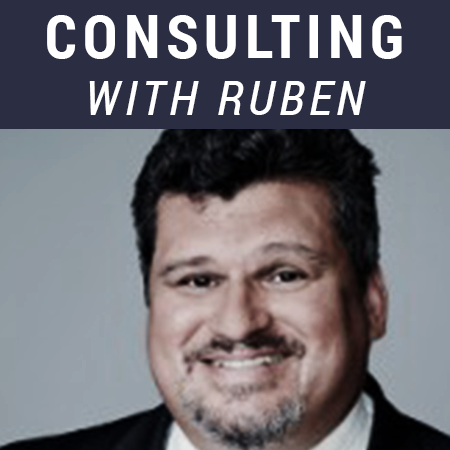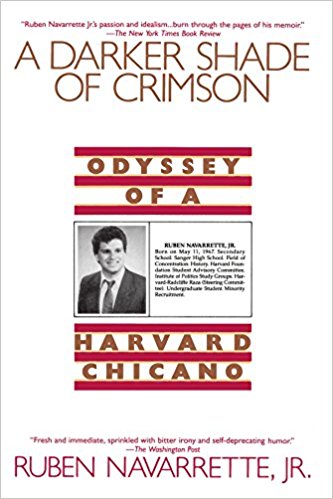When it comes to immigration, conservatives find it hard to multitask. Once they start talking, they stop thinking.
They love soundbites and simple solutions. And they don’t believe in letting a good catchphrase go to waste.
It used to be that those on the right would bash opponents on the pro-immigrant side by accusing them of supporting “amnesty” or creating “sanctuary cities.”
Conservatives were not deterred in the least by the fact that no one in Congress has called for an unconditional amnesty for undocumented immigrants since the 1980s. And, point of fact, back then the folks who were most likely to propose that course of action were pro-business Republicans like Ronald Reagan and George H.W. Bush.
Nor were they particularly troubled by the reality that there is no such thing as a sanctuary city, meaning there is no municipality on the map where immigration law doesn’t apply and where U.S. immigration agents give the undocumented a “Get Out of Jail Free” card. The proof lies in the fact that the federal government can steamroll into any so-called sanctuary city at will.
Some sanctuary.
Now conservatives insist that anyone who questions the tactics of U.S. Border Patrol agents, or suggests that Immigration and Customs Enforcement be abolished, or worries about the welfare of immigrant families separated at the border, or advocates for Dreamers must be in favor of “open borders.”
That is the catchphrase du jour.
Among those who fancy it is President Trump who last month told a campaign rally in South Carolina: “The Democrats want open borders. They want anybody they wanted, including MS-13, pouring into the country.”
A few days later, Trump tweeted: “HOUSE REPUBLICANS SHOULD PASS THE STRONG BUT FAIR IMMIGRATION BILL… WE WANT STRONG BORDERS & SECURITY WHILE THE DEMS WANT OPEN BORDERS = CRIME. WIN!”
Other Republicans have suggested for years that Democrats push for open borders because they want an unlimited number of immigrants from Mexico and Central America that they can turn into Democratic voters.
And once again, conservatives don’t have a clue about what is really going on in the immigration debate. In this case, they are just plain wrong about how there is supposedly this huge clamor for open borders — in media, politics, business, clergy, or anywhere else.
And Democrats? They’re the last people on Earth to advocate for open borders. That’s the farthest thing from their minds. They’re so traumatized by the experience of having been labeled soft on the Vietnam War in the 1970s, soft on national security in the 1980s, and soft on crime in the 1990s that they are not about to let themselves be labeled soft on illegal immigration today.
In fact, Democrats tend to overcompensate by throwing money at the U.S.-Mexico border. In the last 30 years, Democrats have voted to fund the hiring of more border patrol agents, more walls and fencing, more electronic sensors and drones and just about every other enforcement measure you could name.
This point is not lost on Senate Minority Leader Chuck Schumer, who a few weeks ago tweeted: “Open borders, @realDonaldTrump? The bipartisan immigration bill I authored had $40 billion for border security and would have been far more effective than the wall.”
That would be the Trump Wall, as opposed to the wall and fencing that 26 Senate Democrats — including Schumer, Hillary Clinton, Joe Biden, Dianne Feinstein, and Barbara Boxer — authorized building by supporting the Secure Fence Act of 2006.
Besides, how open is the U.S.-Mexico border? The very claim is often based on the fact that people still come across illegally.
So what? That will always happen. Desperate and determined people will always find a way to go under, over, or around any barrier that stands between them and the possibility of feeding their families. Ingenious smugglers can be counted on to build better mousetraps and try to get past whatever obstacle U.S. officials put in their way — and to use any attempts to fortify the border as an excuse to raise prices.
That is human nature. And the fact that law enforcement or federal officials or the U.S. government can’t change human nature—– anymore than they can change the weather or stop the flow of a river — doesn’t mean the United States isn’t doing a good job of securing the border and thwarting most attempts to breach it.
The Department of Homeland Security has an annual budget of $40.6 billion dollars, of which $7.6 billion goes to ICE and $13.56 billion goes to U.S. Customs and Border Protection.
The fact is, from San Diego to Brownsville, the U.S.-Mexico border has never been more secure. Anyone who says otherwise has probably never taken the time to visit and see it up-close.
So why should we take them — or anything they say — seriously?
Ruben Navarrette, a contributing editor to Angelus News, is a syndicated columnist with The Washington Post Writers Group, a member of the USA Today Board of Contributors, a Daily Beast columnist, author of “A Darker Shade of Crimson: Odyssey of a Harvard Chicano,” and host of the podcast “Navarrette Nation.”





